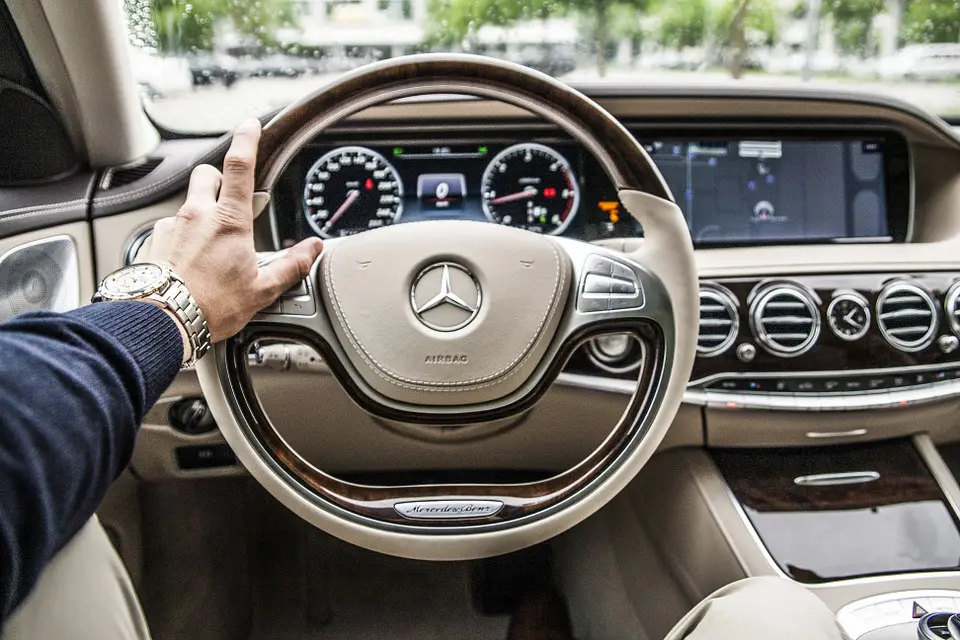Part of driving—especially freeway and highway driving—is dealing with big rigs. You’ve probably been trapped behind one as it accelerated sluggishly from an intersection or struggled up an incline. Semi-trucks can slow you down and be hard to maneuver around, but before you get too frustrated, consider what life would be like without them. About 70 percent of all the freight in the U.S. is transported by trucks, so trucks clearly play a key role in our nation’s supply chain.

(Pixabay / Free-Photos)
Since we can’t live without trucks, it’s important to learn to live more harmoniously with them. According to the most recent statistics from the U.S. Department of Transportation, there were over 5,000 fatalities from large truck and bus crashes in 2017. As we work together for safer roads, here are some ideas for thinking like a trucker. Driving a car is significantly different than driving a truck, and the more people appreciate the differences, the better they can share the road.
Here’s what truckers know that you should too:
Big rigs don’t turn on a dime. If you see truckers veering out to the left as they approach an intersection for a right-hand turn, give them space. These rigs aren’t made for tight turns, and trying to get around a corner—especially on narrow streets in urban areas—can be really stressful.
Trucks have massive blind spots. Don’t drive alongside a truck for any longer than you have to, because they may pull into you without even knowing that you’re there. And remember that if you can’t see truckers in their mirrors, they definitely can’t see you.
Trucks stop slowly. Trucks have air brakes, which engage slower than car brakes, and they can become depleted if truckers have to brake too hard or too often. Some trucks require an entire football field’s length to stop, so avoid putting truckers in a position where they will have to slow down abruptly.
Bad road conditions are worse for truckers. If you have trouble maneuvering or stopping on a rainy, windy, or icy road, it’s even worse for a trucker carrying a heavy load with delayed braking power. Allow a lot of room on both sides of a big rig, as well as in front of and behind them, in inclement weather.
Changing lanes is hard. It’s not easy to change lanes in a big truck. If you see truckers signaling that they want to move left or right, do your best to get out of their way, even if it means that you have to slow down a little to help them out.
Merging traffic does not have the right of way. If you are coming off of a ramp onto the freeway, the freeway traffic has the right of way. Truckers will often try to move over to accommodate merging traffic, but they don’t always have that luxury. If a trucker can’t get over to let you into the flow of traffic, yield rather than cutting in front of them.
Trucks may have to take it slow. Because of their size and weight (up to 80,000 pounds on fully-loaded 18-wheelers), semi-trucks tend to accelerate slower, and their drivers often maintain slower speeds so that they can brake quickly if needed. Also, trucks take turns slowly so they don’t flip over. The worst thing you can do is to get frustrated with truck drivers and try to zip in front of them. Be patient, realizing that big rig drivers are likely going as fast as they safely can.
You may not ever have the chance to get behind the wheel of a semi-truck to fully empathize with these drivers, but if you consider their challenges and limitations, you can be more thoughtful and careful—and that can translate into safer roads for everyone.
Sadly, even though cautious and considerate driving can prevent many accidents, it won’t stop all of them. If you are injured in a trucking accident, call a qualified accident injury attorney to help you navigate the legal system, file a claim, and get the compensation that you deserve.
Driving in the road while big trucks pass by could be dangerous. Aside from that scary feeling, anticipate that the drivers can see you because their view will be limited. Do not overtake when you are following a big rig, instead, follow these tips so that you will not regret it later on.

![7 Tips to Drive Safe Near Big Rigs [infographic] 7 Tips to Drive Safe Near Big Rigs [infographic]](https://tingeylawfirm.com/wp-content/smush-webp/2019/06/7-Tips-to-Drive-Safe-Near-Big-Rigs.jpg.webp)